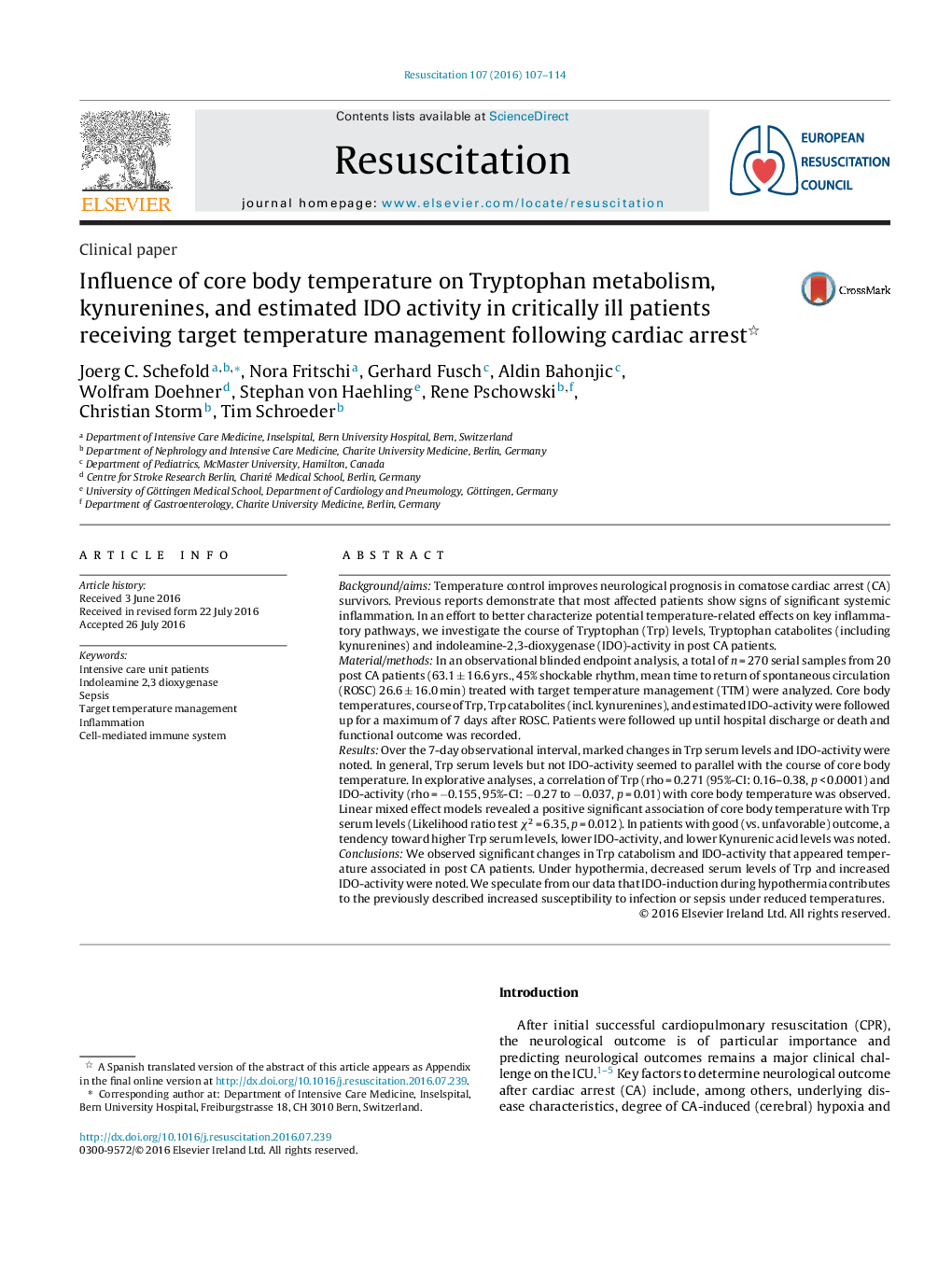| Article ID | Journal | Published Year | Pages | File Type |
|---|---|---|---|---|
| 3007639 | Resuscitation | 2016 | 8 Pages |
Background/aimsTemperature control improves neurological prognosis in comatose cardiac arrest (CA) survivors. Previous reports demonstrate that most affected patients show signs of significant systemic inflammation. In an effort to better characterize potential temperature-related effects on key inflammatory pathways, we investigate the course of Tryptophan (Trp) levels, Tryptophan catabolites (including kynurenines) and indoleamine-2,3-dioxygenase (IDO)-activity in post CA patients.Material/methodsIn an observational blinded endpoint analysis, a total of n = 270 serial samples from 20 post CA patients (63.1 ± 16.6 yrs., 45% shockable rhythm, mean time to return of spontaneous circulation (ROSC) 26.6 ± 16.0 min) treated with target temperature management (TTM) were analyzed. Core body temperatures, course of Trp, Trp catabolites (incl. kynurenines), and estimated IDO-activity were followed up for a maximum of 7 days after ROSC. Patients were followed up until hospital discharge or death and functional outcome was recorded.ResultsOver the 7-day observational interval, marked changes in Trp serum levels and IDO-activity were noted. In general, Trp serum levels but not IDO-activity seemed to parallel with the course of core body temperature. In explorative analyses, a correlation of Trp (rho = 0.271 (95%-CI: 0.16–0.38, p < 0.0001) and IDO-activity (rho = −0.155, 95%-CI: −0.27 to −0.037, p = 0.01) with core body temperature was observed. Linear mixed effect models revealed a positive significant association of core body temperature with Trp serum levels (Likelihood ratio test χ2 = 6.35, p = 0.012). In patients with good (vs. unfavorable) outcome, a tendency toward higher Trp serum levels, lower IDO-activity, and lower Kynurenic acid levels was noted.ConclusionsWe observed significant changes in Trp catabolism and IDO-activity that appeared temperature associated in post CA patients. Under hypothermia, decreased serum levels of Trp and increased IDO-activity were noted. We speculate from our data that IDO-induction during hypothermia contributes to the previously described increased susceptibility to infection or sepsis under reduced temperatures.
